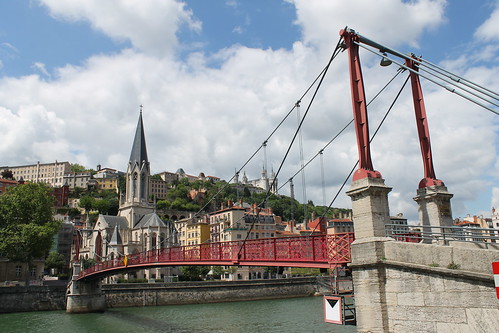Last week, we welcomed our first visitors to Lyon. My friend Kat, who graduated a few years after me from our alma mater, has been doing her masters in journalism in Paris. Out of the (somewhat) blue, she messaged me to say that her mother was visiting her, and wanted to see another city in France. Was that couch of ours still available? Of course it was! We had a great two days hanging out with Kat and her mother Michelle and took the chance to see one of the parts of Lyon that we hadn’t yet visited.

Here’s Lyonnais Geography and History 101: the city of Lyon is divided by two rivers, which flow from the north and merge together in the south. On the east is the Rhône River, and we live on its east bank, right next to Parc de la Tête d’Or. In the middle of the two rivers is the hill of Croix-Rousse and Presqu’île. To the west runs the Saône, and on its west bank that (in other words, clear on the other side of the city from us) is Vieux-Lyon and the hill of Fourvière. (If you are super confused about this geography, check out this map of Lyon.) The two hills of Fourvière and Croix-Rousse are historically (and respectively) contrasted as the hill that prays and the hill that works, because Fourvière is home to the Basilica of Fourvière, and Croix-Rousse was home to the silk workers who made this city an industrial center of their trade in the 19th century. Fourvière is coincidentally also where the oldest part of Lyon can be found, the remains of the town of Lugdunum, capital of the Roman province of Gaul (modern-day France). And if you ever took more than three years of Latin, you will know that Gallia est omnis divisa in partes tres.